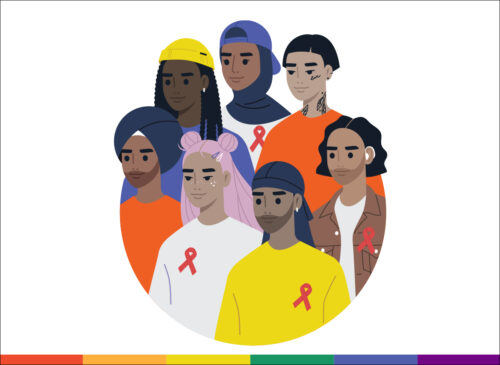
This the first of a three-part series. Read parts two and three.
Amidst 2020’s pandemic, a great shift is taking place. It is not, however, the shift to protective gear, self-isolation, curbside pick-up and a world without sports, travel, or theatre. While a darkened Broadway, the cancelled Olympic games, and a tourist-less Eiffel Tower are sad and visible signs of the world’s need to adjust to the COVID reality, a quieter but equally widespread and important shift is also occurring. Online learning is gaining prominence at many levels of formal education. As my interest and expertise lie at the postsecondary level, I am going to share my experiences working with postsecondary faculty as they make the transition to virtual teaching and learning. Given the sudden need to move courses online, triggered by the spread of COVID-19, there was not a lot of lead time for stakeholders.
In this article, the first in a series of three, I draw on my many years of experience in online learning and on research in this field to critically consider the wide range—and depth—of issues that shape a transition as large as this one. I will consider not only the logistics of making this shift, but also issues of culture, language, and, of course, pedagogy.Pedagogical positioning is key to success in online teaching and learning. In many ways, this choice is more important than the learning management systems and other technologies used.
Background and language
This series is not about “how” to teach or what is currently trending in the field of distance education. Rather, it is about misconceptions of online education, the state of higher education, and human frailty in light of crisis and urgency. When the spread of COVID-19 forced the abandonment of the traditional classroom, educators and students found themselves locked down at home. Classrooms-as-gathering-places disappeared along with well-established educational processes. The game changed, practically overnight.
A flurry of blog posts, tweets, and even some hastily constructed articles quickly exposed the concerns of both educators and learners who suddenly found themselves expected to teach and learn online. Among those trained as distance educators, there was both alarm and excitement. Over the years, I have observed a lack of understanding amongst educators and learners who have not had a lot of experience outside the formal classroom. Although the pandemic presented formidable challenges, it became clear that experienced distance educators could play an important role in training and supporting fellow teachers in how to use the virtual classroom.
The first issue became clear soon into the transition. As is often the case, it was an issue of language. While language is crucial to meaning and understanding, the field of distance education relies more heavily on nuance and interpretation than does, say, traditional in-class education—and for good reason. It is easy to define the classroom as a place where learners gather, even if that place is a hut with a thatched roof, a grand hall in an ancient university, or a modular structure surrounded by playgrounds at an elementary school. Defining learning at a distance is more challenging and has involved a great deal of academic theory and study. How big is the distance? How important is it? Where is the control? Who has it? Is there autonomy?
The term “remote,” as in “remote teaching,” has emerged as a product of language tension. For me, the term instantly brings to mind remote-control cars zipping around the floor while 11-year-olds (or adults) gleefully work a handheld device covered in buttons. I understand the intended analogous use of the term, but it fails us if we let it stand as a description of the changed processes that have been instituted. To be remote is to be away, far away. In online education—today’s platform for distance learning—we emphasize the importance of the distance factor but, more importantly, we work at diminishing the effects of that factor. Much of the literature in our field concerns itself with eliminating, as much as possible, the notions of isolation, distance, and loneliness. Rather, we focus on building community and establishing virtual classrooms with connectivity, safety, and trust.
Advocates of the term “remote” explain that it is the chosen term for what traditional universities are doing in order to respond to the current crisis:
Courses created specifically for online instruction have been collaboratively designed by a content expert (normally a faculty member) and an instructional designer and digital media and educational technology specialist. Online course development is guided by instructional design strategies and makes use of pedagogically led technology. Online courses are intentionally developed for instructors and students to be separated by space (location) and/or time (often both).
Remote instruction, as the term is used here, uses technology-enabled tools and software to facilitate course delivery when in-person instruction is not possible in response to the COVID-19 pandemic. “Remote” instruction is not directly comparable to “online course” instruction. The difference is not in the quality of the content, but in the design of content delivery. (personal correspondence, June 2020)
If one were looking for a way to differentiate “remote” from “online” or to justify what is constructed hastily in the face of a pandemic, one might accept these definitions. However, the differentiation fails on two fronts: 1) not all online courses are the product of careful and sustained teamwork; and 2) using the term “remote” defeats the entire purpose and spirit of online learning.
In a watershed era, such as the one in which we are currently living, where the urgent transition to online learning is almost universal, surely the best strategy—the most sound pedagogical strategy and the most well-spirited strategy—is to embrace what online learning has to offer and celebrate its strengths.
What are those differences? They include these foundational pillars: the physical separation of teacher from learners; the mediating use of technology in some form; the need to shift from teacher-centred learning to learner-centred learning to maintain student engagement; the assumed and desired shift from a positivist approach to a constructivist approach; the freedom from a bricks-and-mortar-influenced real-time structure; and the additional attention needed to build community, safety, and trust. The description of and rationale for these tenets has been well established in decades of literature and it is not the aim of this article to revisit them, explain them, argue them, or glorify them. The field accepts them and has built its pedagogical understanding on the foundations that they provide.
Rather, the topic of transition and the aim of this series of articles is to bring forward and reflect on the transition of “traditional” postsecondary teachers to the structure presented to them by online learning’s underlying tenets. If a tsunami of online learning is to result from our current global health crisis, my premise here is that, instead of relying on an analogy that brings remote-controlled cars to mind, it is the fostering of and engagement with this new pedagogic reality that should define the desired outcome.
The pedagogy of online learning
Harking back to a very old piece of literature, I selected Zane Berge’s 1995 declaration about computer-mediated communication (CMC), the pioneering iteration of today’s online or e-learning. Presciently, Berge defined four modes necessary for successful CMC: the cognitive mode, the technical mode, the social mode, and the managerial mode. Whatever models and frameworks have followed, however useful they may be, these four modes bound the activities that must occur in online teaching-learning dynamics; and they will provide the framework for the discussion of change that will follow in the next article.
Part two of this series of three articles will deal with the enormity of change and the challenges that confronting change present to faculty. The concept of scholarship will also be discussed.
This the first of a three-part series. Read parts two and three.
Dr. Dianne Conrad is a long-time distance educator, researcher, and author.










